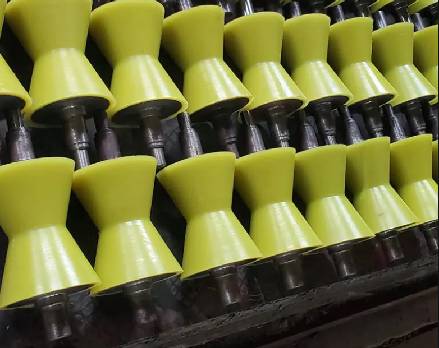 Afrikaans
Afrikaans  Albanian
Albanian  Amharic
Amharic  Arabic
Arabic  Armenian
Armenian  Azerbaijani
Azerbaijani  Basque
Basque  Belarusian
Belarusian  Bengali
Bengali  Bosnian
Bosnian  Bulgarian
Bulgarian  Catalan
Catalan  Cebuano
Cebuano  Corsican
Corsican  Croatian
Croatian  Czech
Czech  Danish
Danish  Dutch
Dutch  English
English  Esperanto
Esperanto  Estonian
Estonian  Finnish
Finnish  French
French  Frisian
Frisian  Galician
Galician  Georgian
Georgian  German
German  Greek
Greek  Gujarati
Gujarati  Haitian Creole
Haitian Creole  hausa
hausa  hawaiian
hawaiian  Hebrew
Hebrew  Hindi
Hindi  Miao
Miao  Hungarian
Hungarian  Icelandic
Icelandic  igbo
igbo  Indonesian
Indonesian  irish
irish  Italian
Italian  Japanese
Japanese  Javanese
Javanese  Kannada
Kannada  kazakh
kazakh  Khmer
Khmer  Rwandese
Rwandese  Korean
Korean  Kurdish
Kurdish  Kyrgyz
Kyrgyz  Lao
Lao  Latin
Latin  Latvian
Latvian  Lithuanian
Lithuanian  Luxembourgish
Luxembourgish  Macedonian
Macedonian  Malgashi
Malgashi  Malay
Malay  Malayalam
Malayalam  Maltese
Maltese  Maori
Maori  Marathi
Marathi  Mongolian
Mongolian  Myanmar
Myanmar  Nepali
Nepali  Norwegian
Norwegian  Norwegian
Norwegian  Occitan
Occitan  Pashto
Pashto  Persian
Persian  Polish
Polish  Portuguese
Portuguese  Punjabi
Punjabi  Romanian
Romanian  Russian
Russian  Samoan
Samoan  Scottish Gaelic
Scottish Gaelic  Serbian
Serbian  Sesotho
Sesotho  Shona
Shona  Sindhi
Sindhi  Sinhala
Sinhala  Slovak
Slovak  Slovenian
Slovenian  Somali
Somali  Spanish
Spanish  Sundanese
Sundanese  Swahili
Swahili  Swedish
Swedish  Tagalog
Tagalog  Tajik
Tajik  Tamil
Tamil  Tatar
Tatar  Telugu
Telugu  Thai
Thai  Turkish
Turkish  Turkmen
Turkmen  Ukrainian
Ukrainian  Urdu
Urdu  Uighur
Uighur  Uzbek
Uzbek  Vietnamese
Vietnamese  Welsh
Welsh  Bantu
Bantu  Yiddish
Yiddish  Yoruba
Yoruba  Zulu
Zulu Benefits of Ceramic Pulley Lagging for Enhanced Performance and Durability in Conveyor Systems
The Importance of Ceramic Pulley Lagging in Modern Industries
In today's rapidly evolving industrial landscape, efficiency, durability, and maintenance play critical roles in optimizing performance across various sectors. One often underestimated yet vital component in ensuring these qualities is pulley lagging, particularly ceramic pulley lagging. This technology is becoming increasingly prevalent in industries that rely heavily on conveyor systems, including mining, manufacturing, and logistics.
What is Ceramic Pulley Lagging?
Ceramic pulley lagging consists of a protective layer applied to the surfaces of pulleys in conveyor systems. This lagging can be composed of rubber or other materials embedded with ceramic tiles or beads, providing enhanced strength and durability. The primary purpose of this technology is to improve the traction between the belt and the pulley, reducing slippage and increasing the overall efficiency of the conveyor system.
Enhanced Durability and Performance
One of the main advantages of ceramic pulley lagging is its ability to significantly increase the durability of the pulleys and belts. Traditional lagging materials often wear out quickly under the constant stress of heavy loads and high-speed operations. In contrast, ceramic materials are known for their exceptional hardness and resistance to wear. This durability leads to fewer replacements and repairs, translating to lower maintenance costs over time.
Moreover, ceramic lagging improves the coefficient of friction between the belt and the pulley. This increased friction means that the conveyor system can handle heavier loads without the risk of slippage, which is particularly crucial in industries that move bulk materials, such as mining and quarrying. By reducing slippage, ceramic pulley lagging also contributes to a smoother operation, minimizing disruptions in the production process.
ceramic pulley lagging

Resistance to Environmental Challenges
Another significant advantage of ceramic pulley lagging is its resistance to extreme environmental conditions. Many industrial settings expose equipment to harsh elements, including abrasive materials, extreme temperatures, and moisture. Regular lagging materials may deteriorate rapidly under such conditions, leading to operational inefficiencies and increased costs. However, the robust nature of ceramic tiles ensures that lagging can withstand these challenges, making it a reliable choice for industries operating in demanding environments.
Installation and Maintenance Benefits
The installation of ceramic pulley lagging can also be performed efficiently, often requiring less downtime than traditional lagging materials. Many products are available in pre-assembled sheets or tiles, allowing for a quick and straightforward application process. This factor becomes critical in industries where time is money, and minimizing downtime is essential.
Once installed, ceramic lagging requires minimal maintenance. Its resistance to wear and environmental damage means that operators can focus on other critical maintenance tasks without constantly worrying about the condition of the pulleys. Additionally, any potential wear can be easily monitored, allowing for timely interventions before severe issues arise.
Conclusion
In summary, ceramic pulley lagging represents a significant advancement in industrial conveyor technology. By enhancing durability, improving friction, and resisting environmental challenges, this innovative solution promotes efficiency and cost-effectiveness in various industries. As businesses continue to seek ways to optimize their operational processes, ceramic pulley lagging stands out as a key component that can contribute to improved performance. Investing in this technology not only enhances the longevity of equipment but also ensures that industries can meet the challenging demands of modern production environments with confidence.
-
Revolutionizing Conveyor Reliability with Advanced Rubber Lagging PulleysNewsJul.22,2025
-
Powering Precision and Durability with Expert Manufacturers of Conveyor ComponentsNewsJul.22,2025
-
Optimizing Conveyor Systems with Advanced Conveyor AccessoriesNewsJul.22,2025
-
Maximize Conveyor Efficiency with Quality Conveyor Idler PulleysNewsJul.22,2025
-
Future-Proof Your Conveyor System with High-Performance Polyurethane RollerNewsJul.22,2025
-
Driving Efficiency Forward with Quality Idlers and RollersNewsJul.22,2025





























